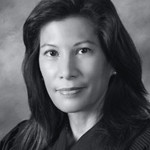That new “Divorce Corp.” documentary by Joe Sorge continues to make waves, with Variety saying that its director “… depicts the family court itself as an untrustworthy, user-unfriendly system of so-called justice. Here, they claim, divorcing couples are placed at the mercy of judges who are frequently irresponsible in their judgment; intolerant of those who attempt to navigate the courts without counsel (there are no court-appointed attorneys); and prejudiced in favor of lawyers who ply them with campaign contributions.”


